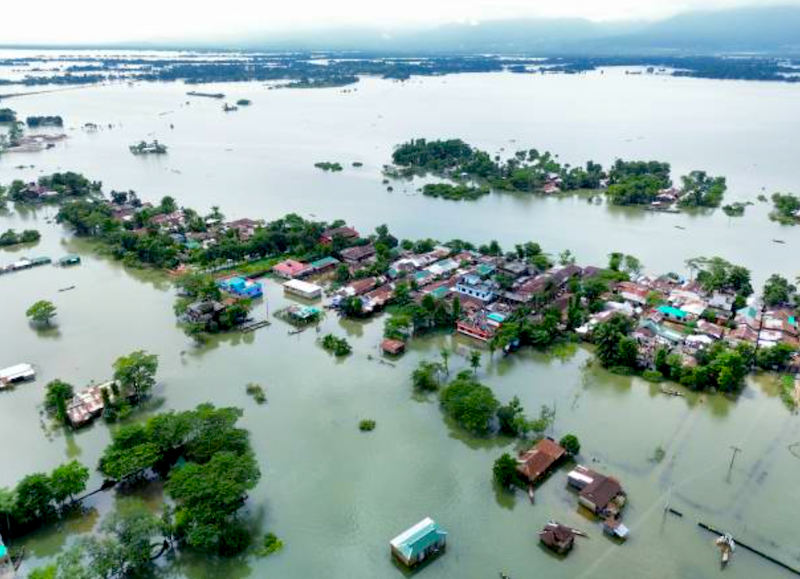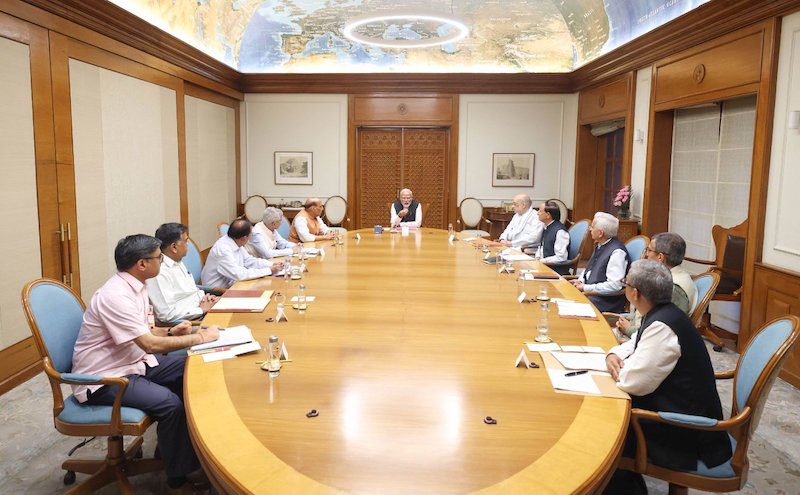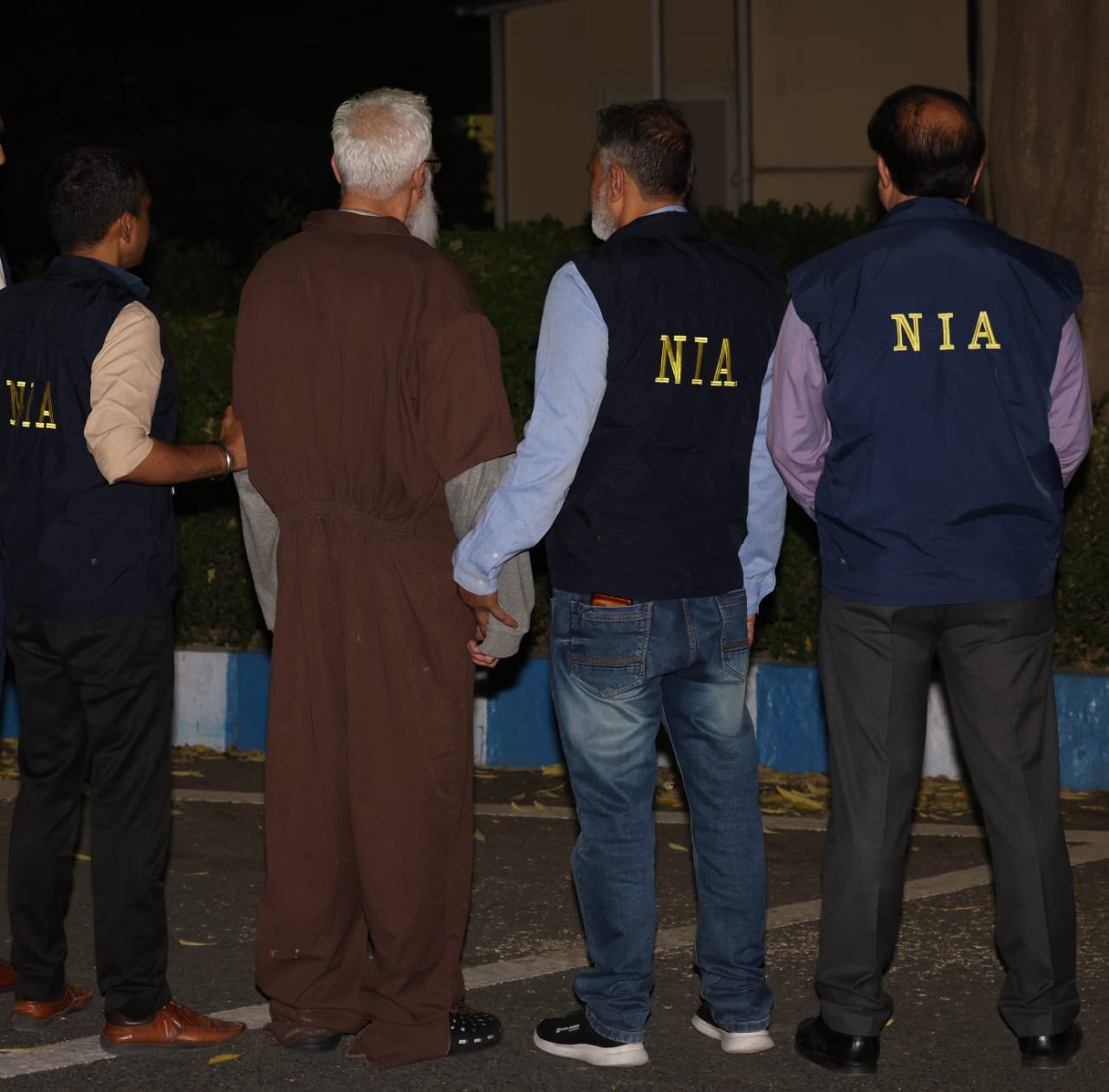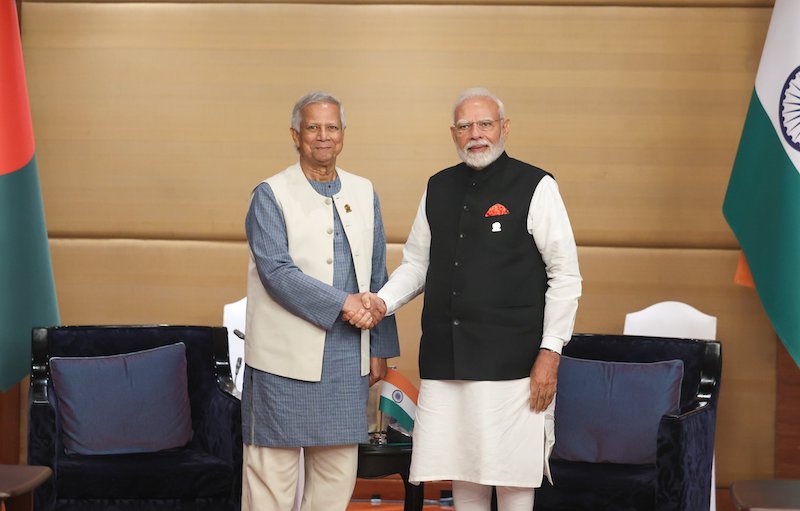 Large parts of Bangladesh, including several cities, have been inundated by floods waters. (Photo via FB)
Large parts of Bangladesh, including several cities, have been inundated by floods waters. (Photo via FB)
New Delhi: The Ministry of External Affairs (foreign ministry) has issued a statement, on Thursday, clarifying that the recent floods in Bangladesh are not a result of water being released from Indian dams. This clarification comes amid accusations from various quarters in Bangladesh, including students from Jagannath University, who alleged that the floods were caused by India opening the sluice gates of the Dumboor dam in Tripura and Gajoldoba barrage in West Bengal without prior notification to Dhaka.
The foreign ministry categorically denied these claims, stating that the flooding in Bangladesh is primarily due to heavy rainfall in the catchment areas of the Gumti river, which flows through both India (in Tripura) and Bangladesh. In the statement, it said: “We wish to reassure our neighbours in Bangladesh that the current flood situation is a natural disaster, exacerbated by heavy monsoon rains, and not due to any water release from Indian dams.”
New Delhi has also expressed solidarity with Dhaka and offered to assist in relief efforts if required.
In the statement, the foreign ministry also emphasized that the Dumboor dam, located in Tripura over 120 kilometres upstream of Bangladesh, is a low-height dam that generates power, part of which is supplied to Bangladesh. The foreign ministry further noted that the catchment areas have witnessed the heaviest rains of the year over the past few days, leading to the current flood situation.
The statement also highlighted the importance of cooperation over river water between New Delhi and Dhaka, given that the two countries share 54 common cross-border rivers. The statement reiterated India’s commitment to resolving issues related to water resources and river water management through bilateral consultations and technical discussions.
Bangladesh flood situation
The flood situation in Bangladesh has worsened significantly, affecting millions of people across several districts. Heavy rains have caused rivers in the northeastern and southeastern regions of the country to overflow, leading to severe flooding in areas such as Cumilla, Feni, Chattogram, Khagrachhari, Noakhali, and Moulvibazar. According to Bangladesh’s Department of Disaster Management and Relief, approximately 1.89 lakh families have been marooned, and the floodwaters have disrupted rail and road traffic, including the Dhaka-Chattogram highway.
Rescue operations are underway, with the Bangladesh Army actively involved in evacuating stranded individuals. The situation remains dire as the country continues to experience heavy rainfall, exacerbating the flooding and making relief efforts challenging. The government has set up numerous relief camps to provide shelter and aid to those affected, but the scale of the disaster has overwhelmed local resources.
The floods have also resulted in casualties, with reports of at least 15 deaths in both Bangladesh and in India’s Tripura. The authorities are closely monitoring the situation and are focused on providing relief to the displaced populations.
Nonetheless, the flood situation in Bangladesh remains dire, with meteorologists warning of further heavy rains in the coming days.










